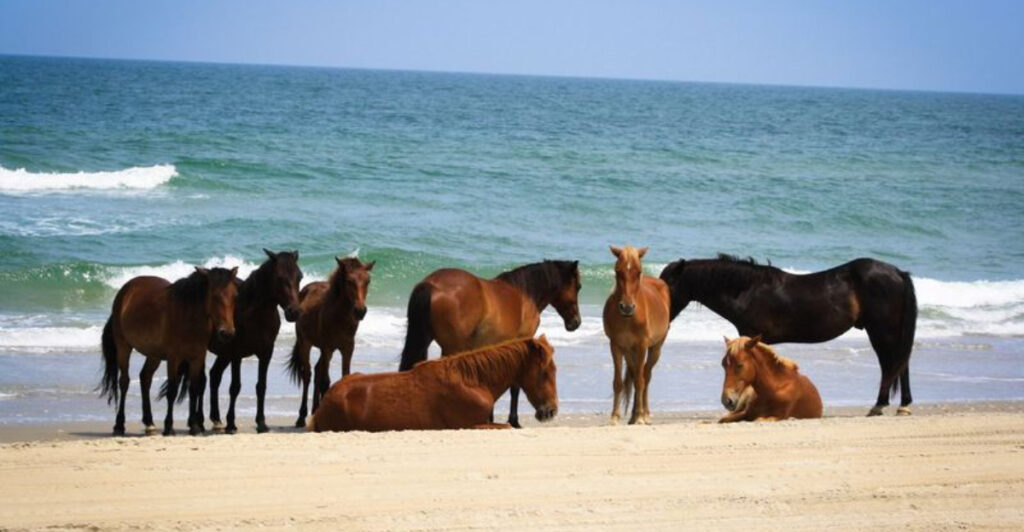On the northernmost stretch of North Carolina’s Outer Banks lies Corolla, a beach town with a magical secret. Here, wild Colonial Spanish Mustangs roam freely across sandy beaches and maritime forests. These majestic creatures have survived for centuries along this coastline, creating one of America’s most unique wildlife experiences right where the Atlantic Ocean meets the shore.
Spanish Mustang Heritage
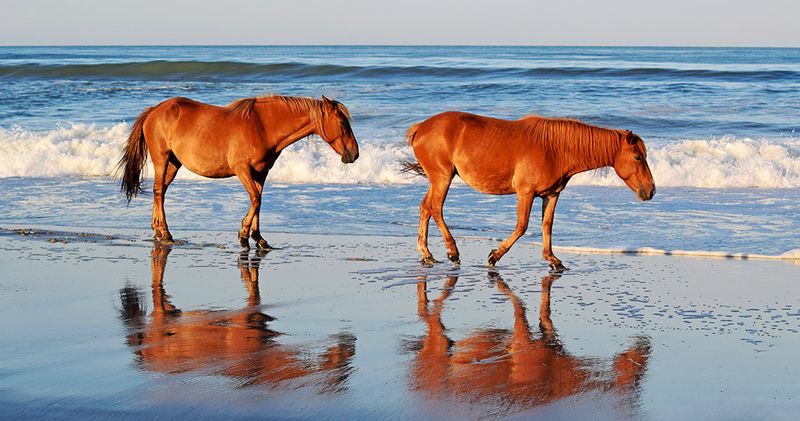
Stepping onto Corolla’s beaches means walking the same sands that have felt the hoofbeats of Spanish horses since the 1500s. These remarkable animals aren’t just any wild horses – they’re living history, descendants of mustangs brought by Spanish explorers nearly five centuries ago.
DNA testing confirms their rare Colonial Spanish bloodlines. Whether they swam ashore from shipwrecks or escaped from failed colonial settlements remains debated among historians.
The isolated nature of the Outer Banks allowed these horses to develop into a distinct breed, adapting perfectly to the harsh coastal environment with specialized digestive systems that can process saltwater plants and brackish water.
Protected Wild Sanctuary
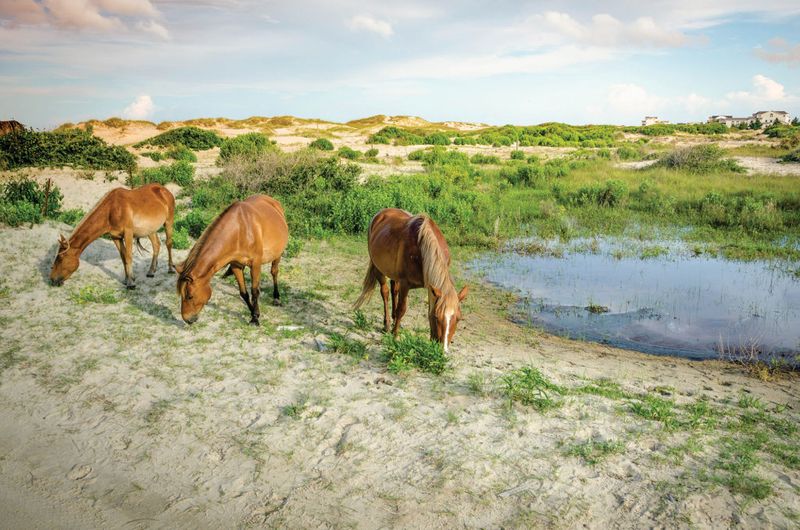
Imagine a 7,500-acre natural sanctuary where horses determine their own destiny. The Corolla Wild Horse Fund established this protected area in 1989 after development threatened these historic animals.
A sound-to-sea fence at the county line creates a boundary, keeping the herd safely away from busy tourist areas. Currently, about 100 horses live within this sanctuary, organized into harems led by dominant stallions.
Their official designation as the State Horse of North Carolina in 2010 brought crucial recognition. Conservation efforts focus on maintaining genetic diversity within this small population while preserving their wild nature and ancient behaviors.
Beach Life Encounters
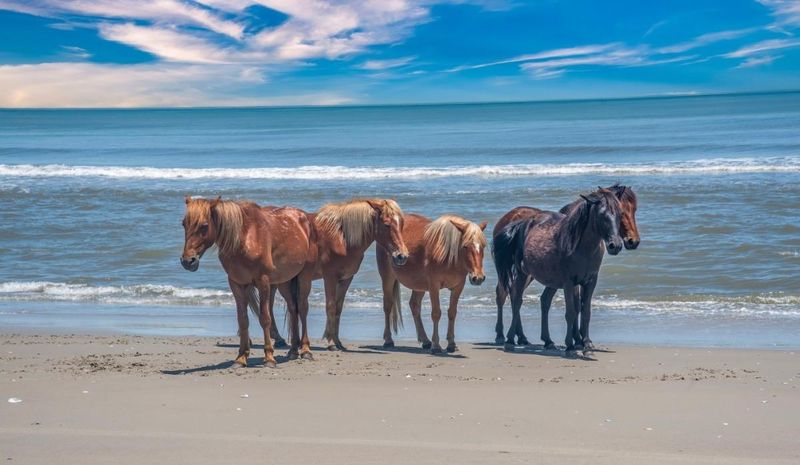
Morning mist rises off the Atlantic as a stallion leads his family across windswept dunes. These magical moments happen daily in Corolla’s northern beaches, particularly in the four-wheel-drive-only area of Carova.
The horses follow ancient patterns, grazing sea oats in early mornings and evenings while seeking shade during midday heat. You might spot them playing in shallow surf, drinking from freshwater pools after rain, or simply standing sentinel on dune ridges.
Their mysterious appearances and disappearances among the landscape create the feeling of stepping into another time. Local residents often wake to find hoof prints crossing their yards – silent reminders of wild neighbors.
Respectful Viewing Guidelines
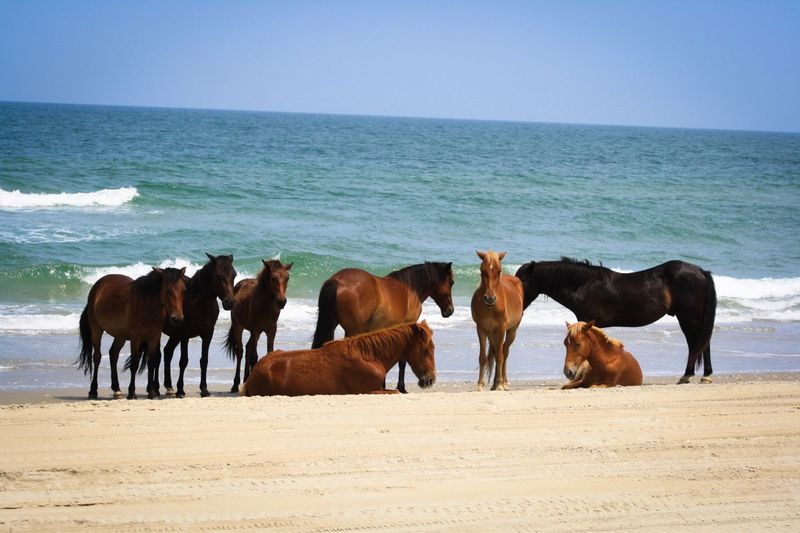
“Look, but don’t touch” isn’t just good advice – it’s the law. Federal and state regulations require staying at least 50 feet from these magnificent creatures at all times.
Feeding the horses proves particularly dangerous because their digestive systems can’t process human foods. Even seemingly innocent offerings like apples or carrots can cause deadly colic. Approaching too closely disrupts natural behaviors and creates dangerous situations for both horses and humans.
Visitors should always view from a distance, never attempt to pet or ride them, and report any injured horses to the Corolla Wild Horse Fund. Remember: these aren’t zoo exhibits but genuine wild animals maintaining their ancient ways.
Safari-Style Adventure Tours

Bouncing along sandy tracks in open-air 4×4 vehicles, visitors experience the thrill of wild horse safaris unlike anything else on the East Coast. Local guides with generations of knowledge navigate remote areas where these magnificent creatures roam.
Tours typically last two hours, traversing beaches, maritime forests, and even shallow sound waters. The best guides share fascinating stories about specific horses known by name and personality.
Early morning excursions offer optimal viewing opportunities when horses are most active. Though sightings aren’t guaranteed – these are wild animals, after all – the 100% natural experience creates memories that last far longer than typical tourist attractions.

